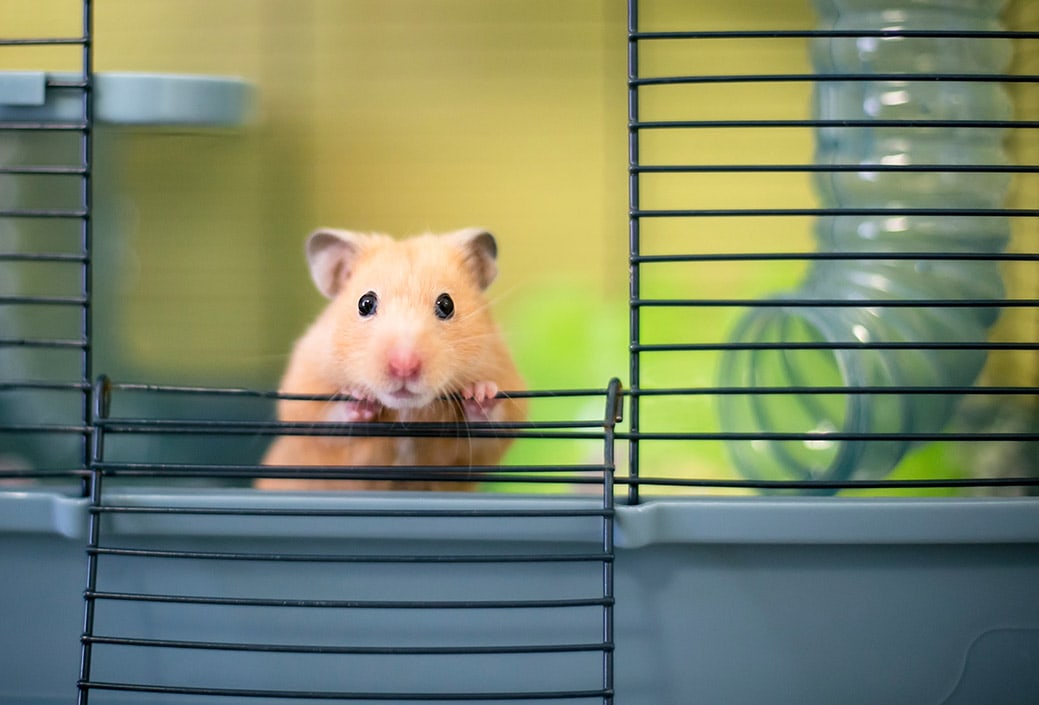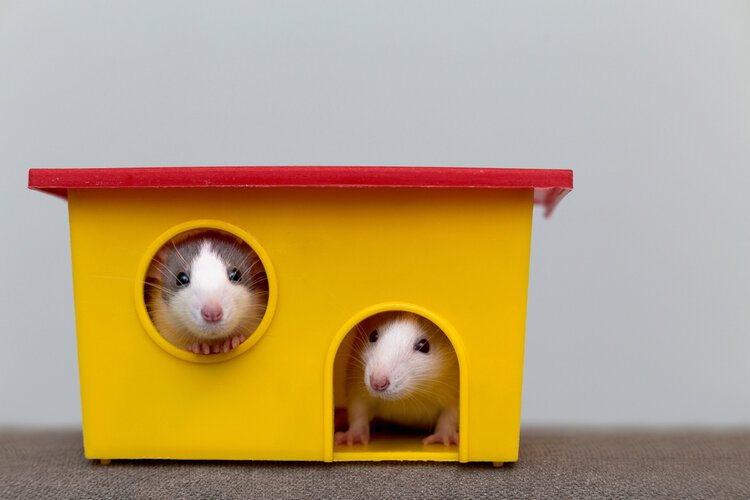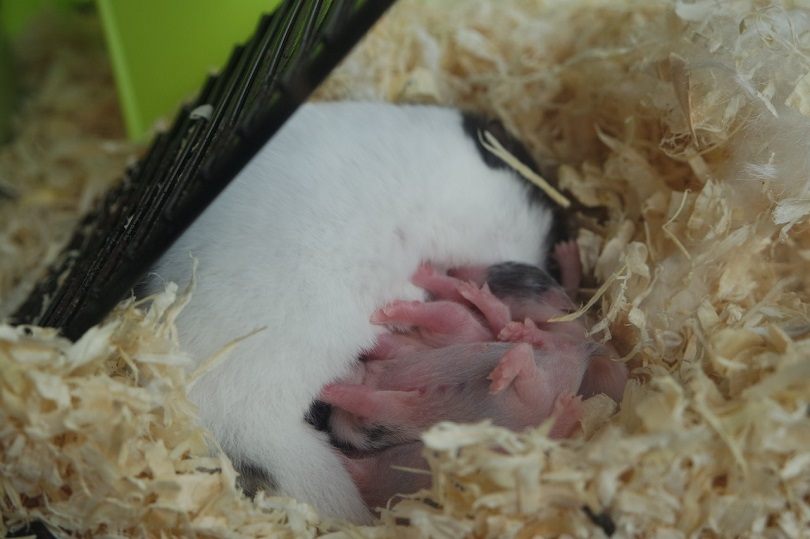
Hamsters have long been popular pets for children. That said, they are best for older children and adults because while they are generally low maintenance, they still require particular care.
If your hamster is acting stranger than usual or seems to be getting a little chubby, you might wonder if these are signs of pregnancy. We’re here to help answer that question.
Several signs can point toward a pregnant hamster, so let’s go over these and the steps that you should take to help your hamster if she is indeed expecting.
The 8 Signs to Tell Your Hamster is Pregnant
1. Your Hamster Has Been in the Company of a Male Hamster
If your hamster has been acting differently and she was in the same cage as a male, this might be a good indication that she is pregnant. The problem is that it can be difficult to tell the difference between males and females.
Female hamsters are ready for breeding by about 6 to 10 weeks of age, though 10 weeks is ideal. But if she’s been around other hamsters and is more than 6 weeks old, pregnancy is a possibility.
2. Your Hamster Is New
It’s common to bring a new hamster home only to find a pile of baby hamsters one morning. Many pet stores will place males with the females because of how difficult it is to determine the sex.
But if you’ve had your hamster for more than 30 days and she hasn’t been around any other hamsters, she’s not pregnant.

3. She Has an Increased Appetite
Just like with humans, a pregnant hamster is eating for two—or 10! She will suddenly start eating and drinking more water than usual. This is normal behavior for an expectant mother but only in conjunction with the other signs.
4. She Is Exhibiting Nesting Behavior
This is common among many animal species: An expectant mother will start nesting in preparation for the babies. She’ll use material found in her cage, like hay, wood chips, and straw, and she might even start storing food inside the nest once it’s completed.
5. She’s Undergoing a Mood Change
Pregnant hamsters might go from sweet to feisty. She might prefer to be left alone and not want to be picked up or cuddled, and she might even seem aggressive and defensive.
Limit your interactions if your hamster seems guarded and uncomfortable with your attention. You don’t want a stressed-out mother-to-be.
6. She’s Gaining Weight
Partly due to her increased appetite but primarily because she’s growing several baby hamsters, you might notice your hamster gaining weight.
You won’t really notice the weight gain until it’s closer to when she will give birth, typically about a week before. Her belly will be pear-shaped, with the wider area on the tail end. As a comparison, an overweight hamster will be rounder and more apple shaped.
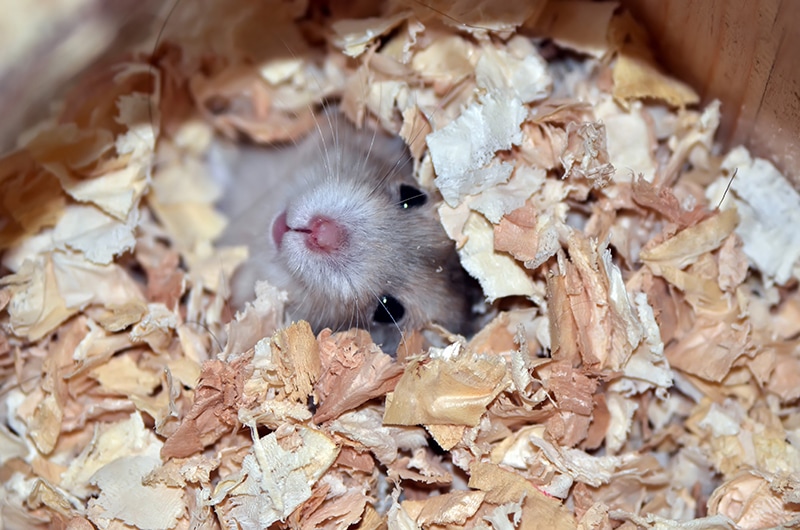
7. She Has Noticeable Nipples
This sign can be challenging to notice and will occur closer to when she’s going to give birth. Her nipples will start to enlarge and become more prominent; they might also darken.
But it might be difficult to see them, particularly if you have a long-haired hamster.
8. There Is Vaginal Bleeding
This is typically the final sign before your hamster goes into labor. She’ll start to pace more and seem restless, and you might notice vaginal bleeding.
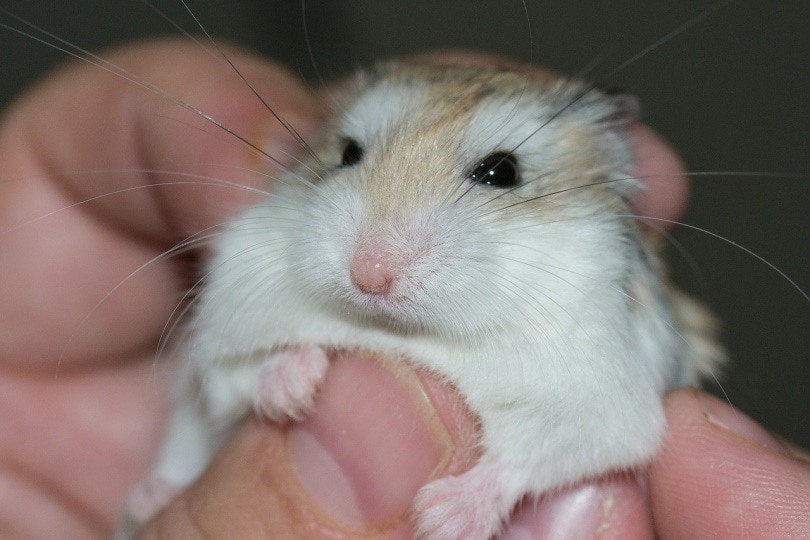
Taking Care of a Pregnant Hamster
There are a few steps that you can take to help your hamster throughout the pregnancy.
Diet
Pregnant hamsters require extra food and fresh water and an increase in protein to help support their own energy needs and those of their babies.
Your hamster will be eating more than usual, so you’ll need to ensure that she has enough food and fresh water. She’ll need high-quality hamster food, but you can add small amounts of freeze dried mealworms or boiled egg as a means to increase her protein. This should continue throughout her pregnancy and while she is nursing her pups.
Speak to your vet about how much and what you should be feeding your hamster at this time.
Nesting
You’ll want to provide your hamster with materials like strips of facial tissue and toilet paper. This will give her extra options for making a nice and soft nest for herself and her pups.
The Cage
If your hamster’s cage is in a noisy area or where there’s extra activity, you should move it to a quieter and calmer location. This should be done before she’s had her babies.
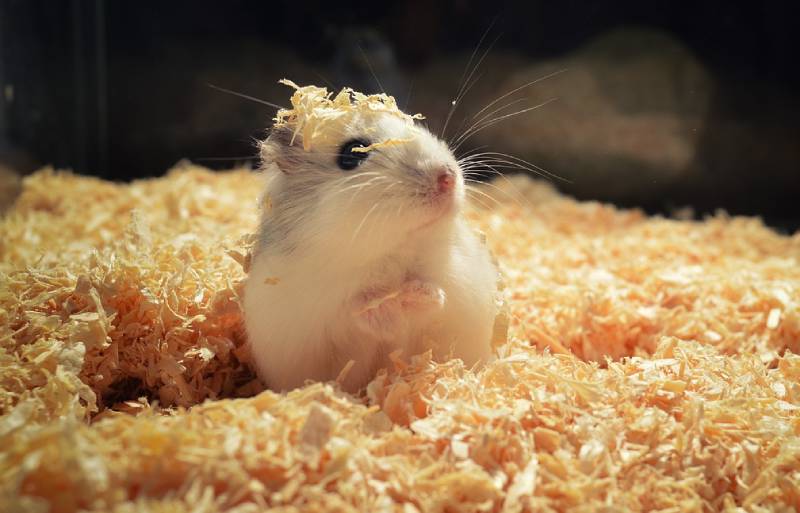
Cleaning
When your hamster giving birth is imminent, you’ll want to give the cage a thorough cleaning. Once she’s had her pups, you won’t be able to clean the cage for 1 to 2 weeks.
Remember, when you notice her larger belly and see her nipples, she’ll likely be giving birth in a matter of days.
Declutter
You’ll want to remove everything but the bedding, food, and water from her cage. Take out any toys and the running wheel. When the babies start to move around, they will be blind and could injure themselves on these items.
If your hamster shares her cage with other hamsters, you should remove them. Their presence might stress out the mother, and there’s a risk that the other hamsters will kill the babies.

After Your Hamster Gives Birth
Hamsters are pregnant for about 16 to 22 days, depending on the species of hamster that you have. The average number of babies that hamsters have is about six to eight pups, but again, it depends on the species.
Hamster babies are born blind, deaf, and hairless, and for at least the first 7 days, you shouldn’t do anything except ensure that the mother has enough water and food. This means no cleaning the cage until the babies are old enough, which might be about 2 weeks.
After 7-10 days, the pups will have opened their eyes, will be eating solid food, and will have grown fur.
However, the babies shouldn’t be removed from their mother until they are around 4 weeks old and fully weaned, which falls sometime in the 3rd week.
The most critical takeaway here is to let the mother be with her babies in a stress-free environment. She needs a quiet and calm space and few intersections with you. Unfortunately, when a mother hamster is stressed, she is more likely to kill her own babies.
Conclusion
There are several ways to determine if your hamster is pregnant. If she has been around other hamsters and is over 6 weeks old, there is a possibility that she might be pregnant. The best way to know for certain, though, is to take her to your vet.
Just keep everything quiet for your hamster and let her take care of her babies on her own without your help. If you’re uncertain about anything, speak to your vet. They can walk you through any potential issues and offer you support.
Featured Image Credit: SanneKTM, Pixabay



